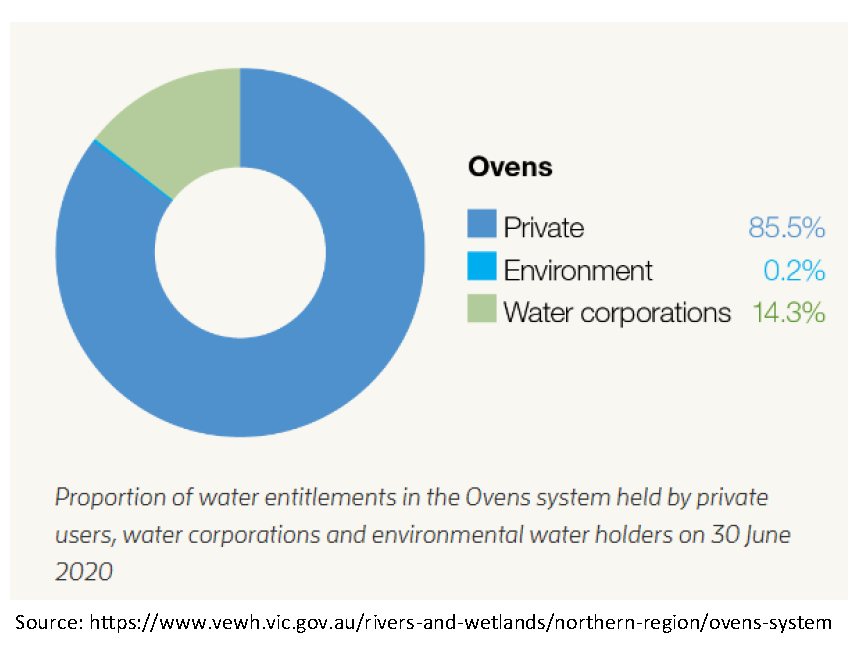Updating the Lower Ovens Environmental Flow Recommendations, Considering Changes in Climate
The project summary
- A lot of scientific, cultural and community knowledge exists about the water needs of plants and animals in rivers and wetlands. Using this knowledge, flows studies are undertaken to identify the types of flows a particular river needs or the wetting and drying patterns needed by wetlands.
1
- Flow studies tell us about the timing, watering duration and amount of water needed to sustain environmental values. They provide flow-dependent environmental objectives and outline the flow regime required to meet these objectives through environmental flow recommendations.
- This project will incorporate climate projections for water availability and develop ‘climate ready’ objectives and flow recommendations for the Lower Ovens System. Climate ready objectives and recommendations are those that are considered achievable under changing climate and water availability.
- This study will also incorporate how cultural and social values in the Lower Ovens System can be maintained through preserving environmental water in the rivers and wetlands.
- The project will have input from key stakeholders, the broader community and Traditional Owner groups at stages throughout the project. See details below for engagement opportunities.
- Updated environmental flow recommendations will be used by the North East CMA and environmental water holders to inform the delivery of environmental water entitlements.
The Lower Ovens River System project area
For this project the Lower Ovens River System includes:
- The Buffalo River below Lake Buffalo
- The King River below Lake William Hovell
- The Ovens River from the confluence of the Buffalo River to the Murray River
- The Lower Ovens floodplain wetland complex from Killawarra to the Murray River
https://www.vewh.vic.gov.au/news-and-publications/technical-reports2
.jpeg?ver=YHZzuC4CR1FPW2SM0RDGTw%3d%3d)
-
The Lower Ovens is partially regulated by Lake Buffalo on the Buffalo River and Lake William Hovell on the King River, tributaries of the Ovens River. However, these water storages are relatively small ensuring good winter flows and wetland inundation in average to wet years.
-
Water held within Lake Buffalo and Lake William Hovell is owned by water holders including irrigators, water authorities, commercial enterprises (e.g., hydro-energy) and the environment.
-
Of the 1,775,000 megalitres, measured at Peechelba (mdba.gov.au) that flows into the Murray River on average each year, the total average annual water use in the Ovens River System is 29,580 megalitres ((g-mwater.com.au).

-
It is important to note that this pie chart does not take into account the ‘unallocated’ or ‘unregulated’ water which flows down the waterways and into wetlands in the Ovens catchment. This water provides substantial environmental, social, recreational and cultural value, not only to the immediate Lower Ovens area, but also to the Murray River and broader Southern Murray Darling Basin.
-
The benefits ‘unallocated’ or ‘unregulated’ water provide are more likely to be at risk under a changing (drying) climate.
May 2023 Community Engagement - What We Heard
Linked below is a summary of ‘What We Heard’ from the community engagement session at Oxley Hall on May 17th, 2023 and from responses we received from the on-line survey. Thanks to everyone that contributed.
What we Heard Community Summary
Further information
For more information on the project download a copy of the project factsheet and final report below.
Other resources
Ovens | Murray-Darling Basin Authority (mdba.gov.au)
Ovens Basin - Goulburn Murray Water (g-mwater.com.au)